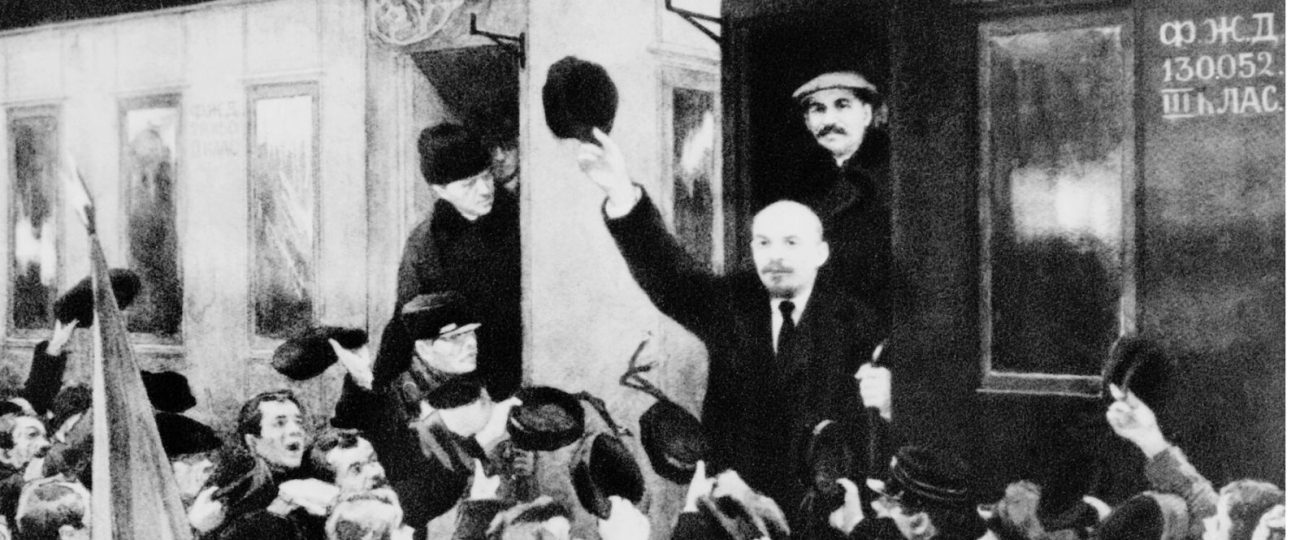What Happened On August 30th?
On the evening of August 30, 1918, Vladimir Lenin, the leader of the Bolshevik Revolution and head of the Soviet government, delivered a speech at the Michelson Factory in Moscow. As Lenin left the factory, Fanny Kaplan, a disillusioned member of the Socialist Revolutionary Party, approached him with a hidden revolver. Kaplan, convinced that Lenin had betrayed the revolution, acted decisively.
Kaplan fired three shots at Lenin. Two bullets struck him—one lodged near his carotid artery, and the other pierced his shoulder and lung. Lenin collapsed, gravely injured but conscious, and immediately understood the seriousness of his wounds. He had insisted on being close to the people, despite frequent warnings from his aides about the dangers. That evening, those fears materialized.
Panic spread quickly as Lenin fell. Onlookers rushed to help him while others subdued Kaplan. Despite his injuries, Lenin remained composed and instructed his aides not to harm Kaplan, though this order didn’t prevent her immediate arrest. Kaplan, unfazed, admitted her actions and declared, “I am not afraid of death. I did my duty.”
The assassination attempt revealed the deep fractures within the revolutionary movement. The Socialist Revolutionaries, once Bolshevik allies, had turned against Lenin as he tightened his control over the government. Kaplan, who had endured years of imprisonment and hard labor under the Tsarist regime, viewed Lenin as a betrayer of the revolution’s promises. Authorities had previously arrested her in 1906 for her involvement in an attempted assassination of a Tsarist official, which led to her severe punishment and long-lasting health issues.
Lenin’s aides transported him quickly to his Kremlin residence, where doctors arrived to tend to his wounds. The bullet in Lenin’s neck posed a grave risk due to its proximity to vital arteries, so the doctors decided against removing it. They focused on stabilizing him and managing his intense pain. Despite the threat of infection and the severity of his condition, Lenin insisted on continuing his work from his bed, demonstrating his relentless commitment to the Bolshevik cause.
The medical team faced numerous challenges. Moscow’s medical facilities were far from adequate at the time, especially during the ongoing civil war, which had drained resources. The doctors, lacking modern surgical tools and antibiotics, provided only rudimentary care. Lenin’s resilience remained remarkable, but the bullet in his neck continued to threaten his life. The pain was severe, and Lenin’s insistence on staying engaged in political affairs only compounded the strain on his already weakened body.
News of Lenin’s shooting reverberated quickly through the Bolshevik ranks and beyond. The Bolsheviks perceived the attack on Lenin as a direct threat to their power. In response, they initiated the Red Terror—a harsh campaign of arrests, executions, and purges aimed at eliminating opposition and solidifying their control. Lenin’s survival rallied the Bolsheviks, but the incident exposed the vulnerabilities in their leadership.
The Red Terror, officially sanctioned shortly after the attack, unleashed brutality on an unprecedented scale. The Cheka, the Bolshevik secret police, wielded nearly unlimited authority to root out and execute counter-revolutionaries, real or imagined. Estimates suggested that tens of thousands were killed during this period, including former comrades from other socialist factions. The intensity of the repression reflected the Bolsheviks’ paranoia and the fragility of their regime.
Some within the Bolshevik leadership viewed the assassination attempt as an opportunity to consolidate power further. Lenin’s close ally, Felix Dzerzhinsky, head of the Cheka, used the attack as a pretext to escalate the terror against perceived enemies. The crackdown extended beyond political opponents to anyone suspected of harboring anti-Bolshevik sentiments.
Kaplan’s deep disillusionment with Lenin’s rule drove her to assassinate him. After her arrest, she endured harsh interrogation but stood firm in her confession, refusing to implicate others. On September 3, 1918, just days after the attack, the authorities executed Kaplan by firing squad. Her execution, shrouded in controversy, raised questions about her role in the attack, particularly given her near-blindness at the time.
Kaplan’s background as a committed revolutionary added complexity to her motives. She was born into a Jewish family in Ukraine and became involved in radical politics as a teenager. Her early arrest and subsequent harsh treatment by the Tsarist regime left her physically weakened but mentally resolute. After the February Revolution of 1917, officials released Kaplan from exile, and she rejoined the revolutionary movement. However, her experiences had left her skeptical of centralized power, and Lenin’s actions after the October Revolution only deepened her disillusionment.
Despite her confession, rumors persisted that Kaplan might have been part of a broader conspiracy or perhaps even a convenient scapegoat used by the Bolsheviks to justify the Red Terror. Her blindness and the difficulties she would have faced in accurately targeting Lenin fueled these speculations. Nevertheless, the Bolsheviks used her execution to send a clear message: they would not tolerate opposition to their rule.
Although Lenin survived the attack, the injuries left lasting damage. The bullet lodged in his neck could not be safely removed, and the pressures of leading a nation at war took a toll on his health. By 1922, a series of strokes had left him partially paralyzed, severely limiting his ability to govern. The assassination attempt likely accelerated Lenin’s decline, reducing his capacity to lead.
In the years following the attack, Lenin’s health steadily deteriorated. The stress of managing the ongoing civil war and the political infighting within the Bolshevik Party exacerbated his condition. Lenin chose to keep the bullet in his neck, despite the constant pain, out of fear that surgery could be fatal. This decision, however, meant that Lenin lived with the daily reminder of Kaplan’s attempt on his life, a constant source of physical and psychological strain.
Lenin’s declining health created a power vacuum within the Bolshevik leadership. As Lenin became less able to fulfill his duties, figures like Leon Trotsky, Joseph Stalin, and others began maneuvering for influence. This internal struggle, set against the backdrop of Lenin’s incapacitation, laid the groundwork for the eventual power struggles that would shape the Soviet Union’s future. Lenin’s death in 1924, likely hastened by the injuries from the assassination attempt, left the Bolsheviks without their unifying leader and plunged the party into a bitter succession battle.





